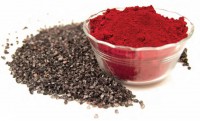EFSA - European Food Safety Authority / Europäische Behörde für Lebensmittelsicherheit
Various changes regarding additives
All food additives used throughout the EU are undergoing revaluation. This is resulting in changes, for example with various E-substances.
By Dr Jörg Häseler
The European Food Safety Authority (EFSA) is also the home of the panel “Food Additives and Nutrient Sources added to Food” (ANS). This panel evaluates the safety of chemical substances added to food products as well as consumer exposure to such substances and publishes individual reports on such substances.
As part of this panel’s work, all additives used throughout the EU are undergoing revaluation, and there are changes as a result. For example, changes have now been implemented regarding E 412, E 120, E 422 and E 460.
The additive guar gum (E 412) is approved for use in products including baked goods, ice cream, desserts and dairy drinks on a “quantum satis” basis, i.e. with no stipulated maximum quantities of the additive for each product. The EFSA panel report states that there is no need for the establishment of an ADI value (Acceptable Daily Intake) for the general public, as there are no health concerns associated with it. However, further testing should be conducted in relation to infants and young children.
Carmine (E 120) is approved as a food colouring for items including confectionery products. According to the ANS, this food colouring containing high levels of 4-aminocephalosporanic (4-ACA) is used in food products. The problem with this is that 4-ACA is not listed in the EU list of approved additives. E 120 containing a significant level of 4-ACA is viewed as an unapproved additive, although the purity criteria in EU Directive No. 231/2012 do not call for any specific maximum value. 4-ACA is a natural component of the cochineal insect and can therefore appear in the food colouring as an impurity.
Glycerol (E 422) is approved on a quantum satis basis for instance for chewing gum, coatings and cocoa and chocolate products. According to the ANS report, there are no genotoxicity concerns associated with it and no necessity for the establishment of an ADI value. There are no safety concerns associated with E 422 in the currently established application conditions. Yet, there are uncertainties regarding impurities related to the production process.
Microcrystalline cellulose (E 460) has quantum satis approval for products including ice cream and chewing gum. The ANS report states that changes should only be made in relation to its solubility in sodium hydroxide solution. •


